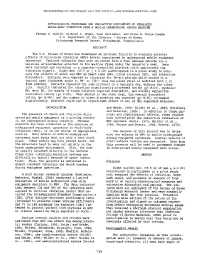Mining Publication: Physiological Responses and Subjective Discomfort of Simulated Whole-Body Vibration From a Mobile Underground Mining Machine
Original creation date: October 1988
The U.S. Bureau of Mines has developed an in-house facility to evaluate selected effects of whole-body vibration (WBV) levels experienced by underground mobile equipment operators, Vertical vibration data were collected from a coal haulage vehicle via a uniaxial accelerometer attached to the machine frame under the operators seat. Data were analyzed and processed so a computer-controlled platform could approximate the vibration signals. Eight men (35.5 yr +- 6.5 SD) participated in a pilot study to evaluate the effects of shock and WBV on heart rate (HR), blood pressure (BP), and subjective discomfort. Subjects were exposed to vibration for 30-min periods while seated in a typical seat (backrest angle at 90 degrees or 130 degrees) that was plain steel or modified with 2 in foam padding. Subjects repeated the same protocol on a separate day, without the vibration. Results indicated the vibration significantly increased the HR (p < 0.01), systolic BP, mean BP, the number of times subjects reported discomfort, and overall subjective discomfort rating (p < 0.05). When seated in the steel seat, the overall discomfort rating (p < 0,001) and the number of times discomfort was reported (p < 0.05) increased significantly. Seatback angle had no significant effect on any of the dependent measures.
Authors: TG Bobick, RL Unger, S Gallagher, DM Doyle-Coombs
Conference Paper - October 1988
Proceedings of the Human Factors Society 32nd Annual Meeting, 1988: 29pp
See Also
- Comparison of Passive Seat Suspension with Different Configuration of Seat Pads and Active Seat Suspension
- Development and Application of Reservoir Models and Artificial Neural Networks for Optimizing Ventilation Air Requirements in Development Mining of Coal Seams
- Modeling and Prediction of Ventilation Methane Emissions of U.S. Longwall Mines Using Supervised Artificial Neural Networks
- Modernization and Further Development of the NIOSH Mine Emergency Response Training System (MERITS), Phase 1
- Probability of Making a Successful Mine Escape While Wearing a Self-Contained Self-Rescuer
- SPONCOM - A Computer Program for the Prediction of the Spontaneous Combustion Potential of an Underground Coal Mine
- SponCom - Spontaneous Combustion Assessment Software - 2.0
- Technology News 545 - NIOSH Updates Spontaneous Combustion Assessment Software
- Technology News 549 - MFIRE 3.0 - NIOSH Brings MFIRE into 21st Century
- Whole-Body Vibration Exposure Comparison of Seat Designs for Low- and Mid-Seam Shuttle Cars in Underground Coal Mines
- Page last reviewed: 9/21/2012
- Page last updated: 9/21/2012
- Content source: National Institute for Occupational Safety and Health, Mining Program


 ShareCompartir
ShareCompartir
